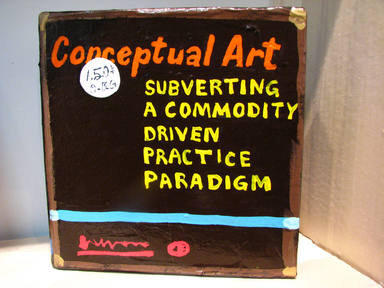"In 1969, we were very free." That’s the first sentence of Peter Schjeldahl’s highly readable review of “1969”, an exhibition at P.S. 1.
The last paragraph of Schjeldahls’ review:
‘“1969” is authentically lugubrious; the only truly depressing aspect of the show is the inclusion of new work by young artists who prove that conceptually driven art, as a phenomenon in and about institutions, has gone essentially nowhere in forty years. Stephanie Syjuco re-creates works by Beuys. Why? (Richard Pettibone’s miniature repainting of a Frank Stella was already jejune in 1969.) Hank Willis Thomas reasonably—but tediously—fills in a missing African-American perspective with pieces reproducing pictures and headlines from Ebony and Jet. Messy installations by a group called the Bruce High Quality Foundation coyly critique museum functions. It seems that we’ll never be permitted to graduate from the university of the obvious.’
I have to admit that the distinction between conceptual art and long-term unemployment is not always clear to me.
A benevolent take on conceptual art would go like this: most art is made for humans, some art is made for pets but conceptual art is made for God.
